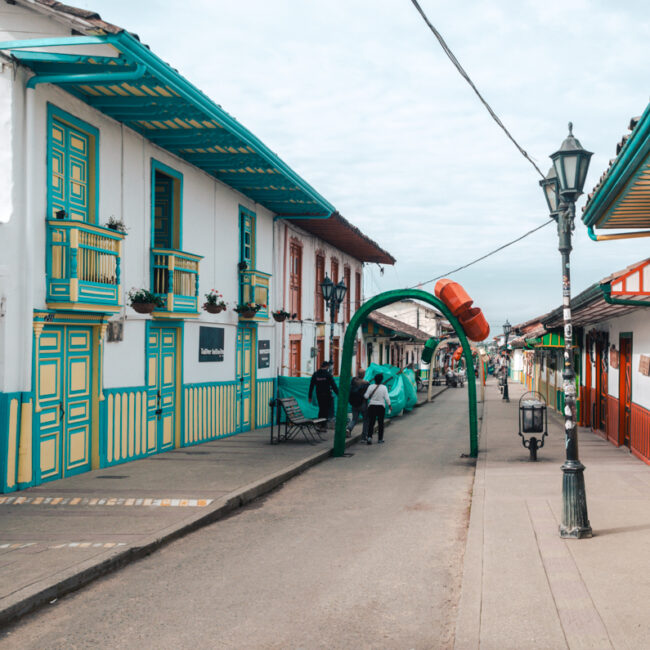

One of the bucket list things that is probably high on your wishlist when traveling to Southeast Asia is having an interaction with Asian elephants. Most travelers these days have become more aware of the unethical practices of elephant rides and circus tricks, which requires to “break the elephant’s soul” so, instead, they will search for “ethical elephant sanctuaries”. But how ethical are they really? In this post, we’ll focus on a few elephant sanctuaries around Chiang Mai in Thailand, an alluring city with a lovely climate and gorgeous Southeast Asian temples. We will zoom in on experiences that some of my blogger friends had and end with a few things to keep in mind before booking an ethical elephant experience in Chiang Mai.
Asian elephants are one of the most impressive animals in Thailand. They are however hard to spot in the wild so the majority of travelers will opt to visit an ethical elephant sanctuary.
Ethical elephant tourism in Chiang Mai has been on the rise for the past decade with sanctuaries popping up like mushrooms around the city. But, are they really ethical?
Elephant tourism is a complex and controversial topic and views and perspectives vary greatly depending on religion, culture, science, and someone’s personal moral principles.
The history of elephant sanctuaries in Chang Mai is closely tied to the evolution of attitudes towards elephant tourism and a growing concern for the welfare of these animals, which are enlisted as endangered species on the IUCN Red List.
Elephants have been a part of Thai culture for centuries and were traditionally used for various purposes, including transportation, logging, and ceremonial events. However, with the decline of logging activities in the late 20th century, many elephants and their mahouts (caretakers) were left without viable employment.
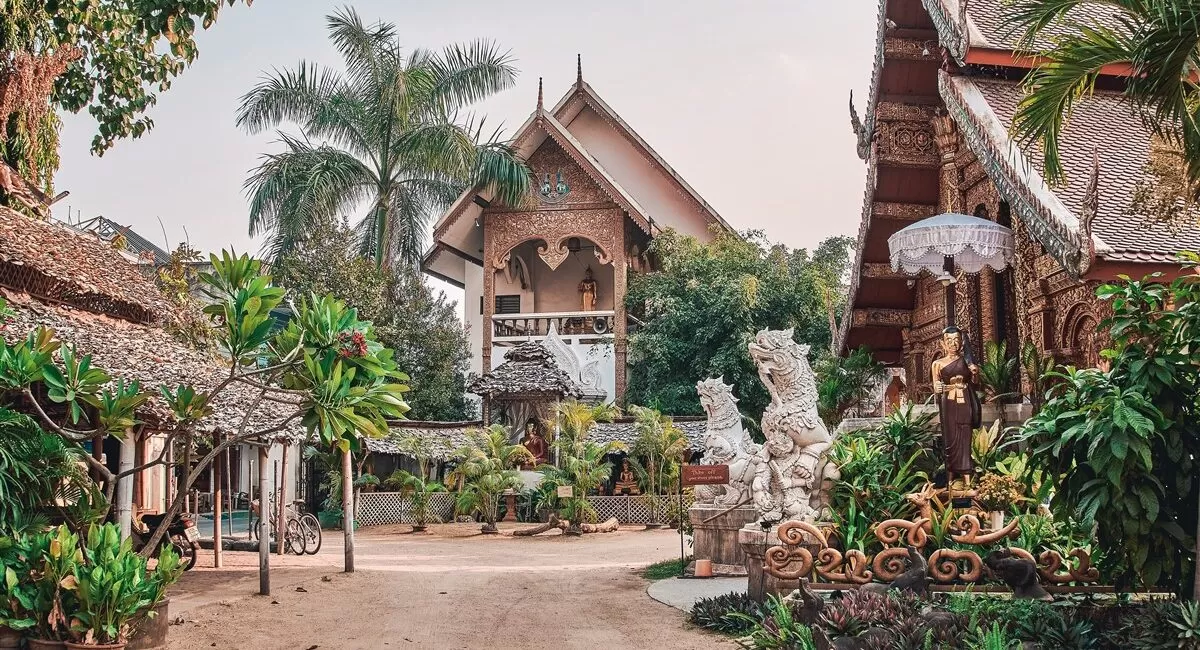
Chiang Mai, Thailand
As elephant logging became less prevalent, some elephants and their mahouts transitioned to the tourism industry. Elephant riding and shows became popular attractions, and many tourists visited Chiang Mai to experience riding an elephant or watch performances. However, concerns regarding the welfare and treatment of elephants in these activities started to emerge.
Over time, there was a shift in public awareness and concern for the well-being of elephants. Activists, conservationists, and animal welfare organizations began highlighting the negative impacts of elephant riding, performing, and other exploitative practices on the physical and psychological health of the elephants.
In response to the growing criticism of traditional elephant tourism, a new model emerged, “elephant sanctuaries”. These sanctuaries aim to provide a more ethical and sustainable alternative, focusing on the well-being and natural behaviors of elephants. The concept gained traction in Chiang Mai and other parts of Thailand as well as in other Southeast Asian countries.
Today, elephant sanctuaries are plenty. Ethical elephant sanctuaries focus not only on providing a safe and natural environment for elephants but also on rescue, rehabilitation, and conservation efforts. They provide a home for abused, retired, or injured elephants, and they work on reintroducing them to protected areas or supporting conservation projects.
Alongside their establishment, ethical sanctuaries also aim to educate tourists on the importance of conservation and provide opportunities for observing elephants in a respectful manner.
→ Also read: The Night Bazaar in Chiang Mai: Is It Worth It?
It’s important to note that some organizations may claim to be ethical but still engage in harmful practices. It’s important to do thorough research and gather information from multiple sources to make an informed decision.
In the next section, some fellow bloggers will share their experiences of a variety of elephant sanctuaries in Chiang Mai. This will give you an idea of what to expect at certain sanctuaries and the ethical treatment of their elephants.
→ Also read: How to Travel From Chiang Mai to Bangkok by Train
Below, you can find 14 reviews of 11 elephant sanctuaries in Chiang Mai that all claim to be ethical. I asked them questions about various topics concerning the welfare of the elephants including elephant riding, bathing, the use of bullhooks, and if they could roam free.
Here is what they had to say!
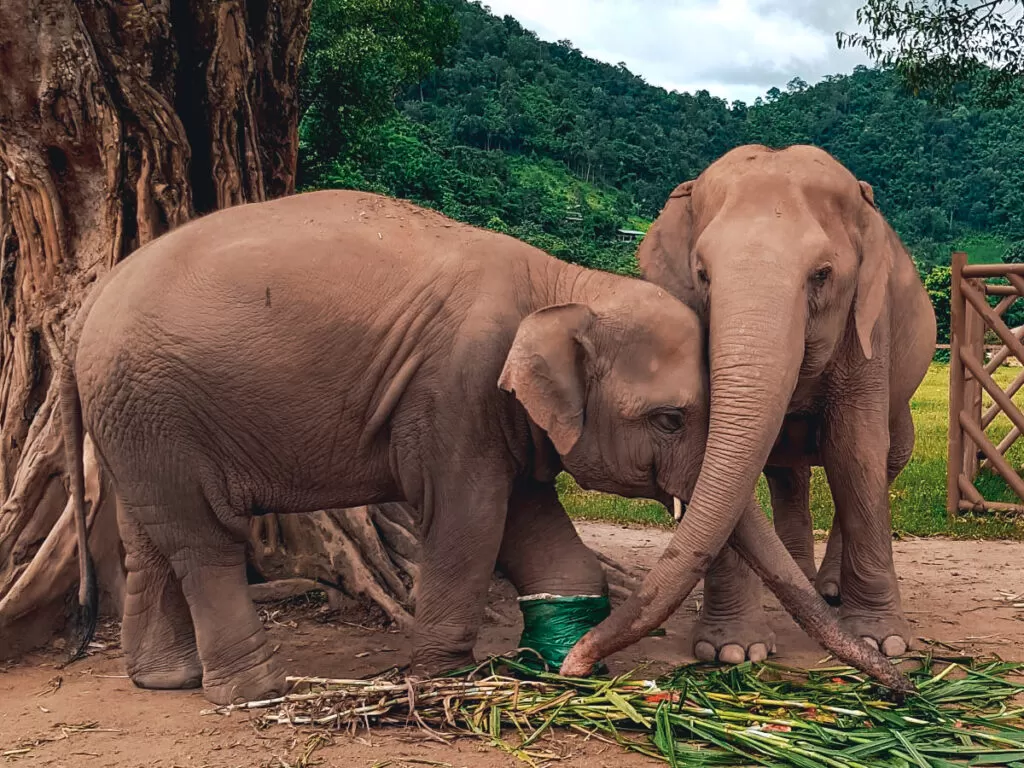
Elephant sanctuaries Chiang Mai: Elephant Nature Park
The Elephant Nature Park in Chiang Mai is a well-known and highly regarded elephant sanctuary and rescue center. It was founded by Sangduen “Lek” Chailert, an internationally recognized conservationist and advocate for elephant welfare.
Elephant Nature Park in Chiang Mai, northern Thailand, is an ethical and non-profit animal sanctuary. They are dedicated to rescuing and rehabilitating abused, neglected, and injured elephants, as well as dogs, cats, and water buffaloes. One of the most important aspects of the sanctuary (and why I chose to book a tour on our family holiday) is its commitment to the well-being of the elephants.
Elephant Nature Park does not allow anyone to ride the elephants, ensuring that these gentle giants are not subjected to harmful practices, and protecting them from unnecessary stress or discomfort. The elephants in the sanctuary roam freely within the vast grounds of rolling hills, dense jungle, open grassland, and tranquil river.
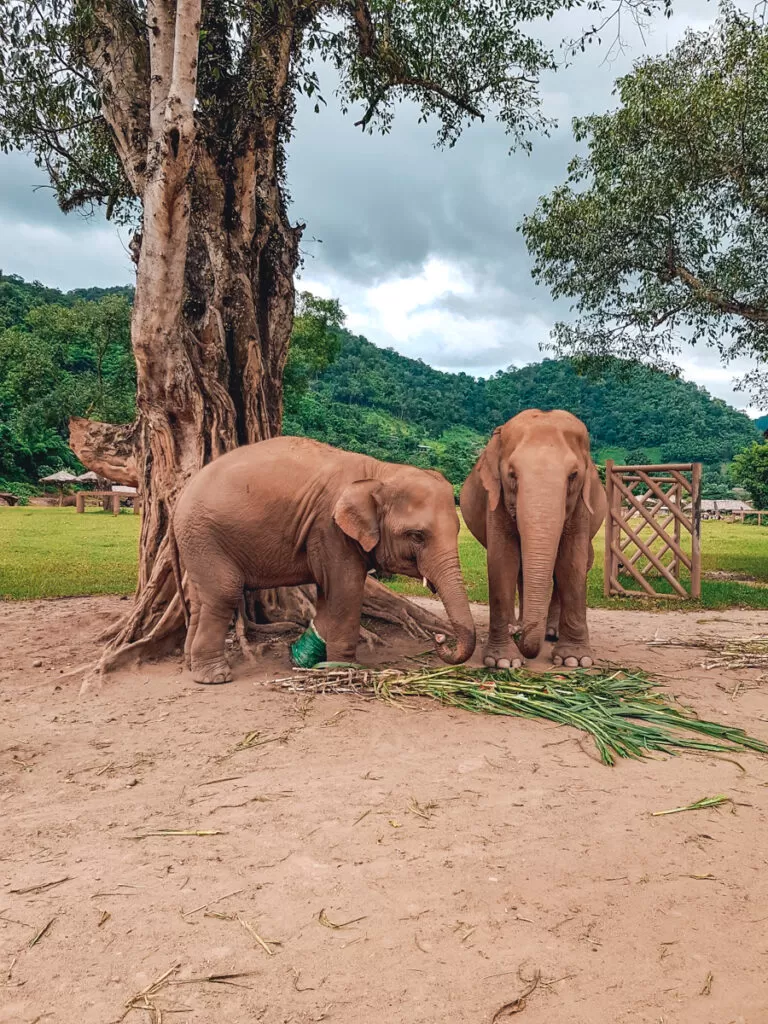
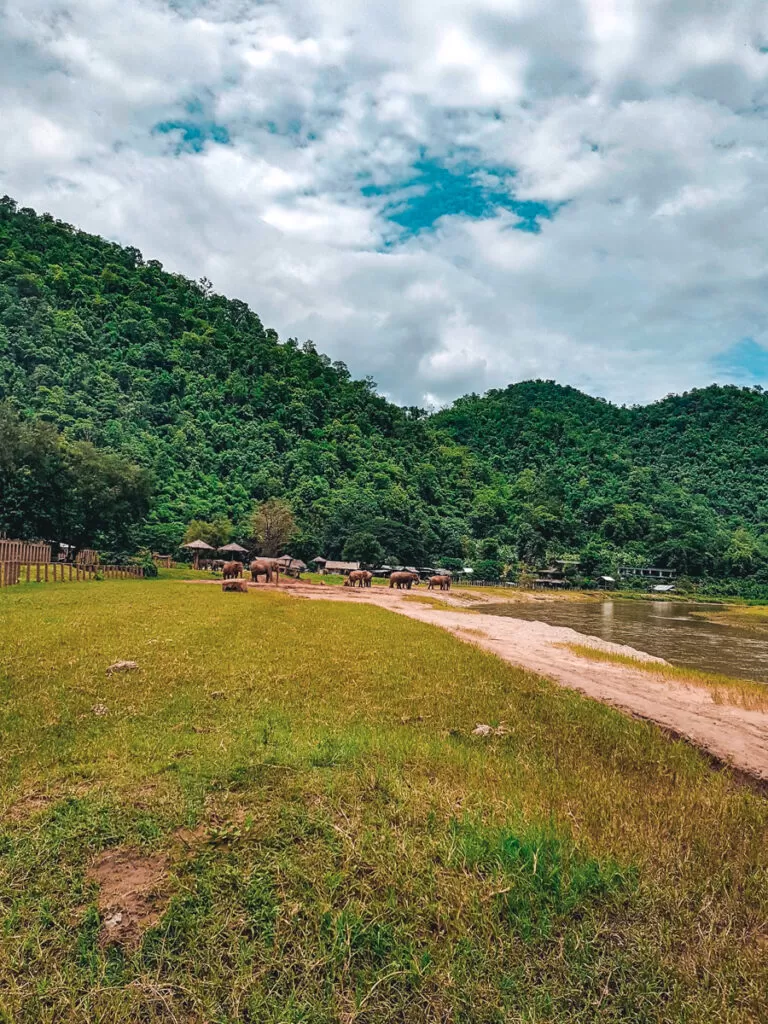
Elephant Sanctuaries Chiang Mai: Elephant Nature Park
During our visit we had the chance to feed the elephants some fresh fruit, whilst also listening to the guide as she informed us about each individual’s survival story. It was a truly humbling experience to witness the resilience of these gentle giants. We then got to spend a lot of time watching them at play and taking photos at a comfortable distance. This included seeing the elephants splashing joyfully in the river, and also rolling gleefully in a fresh pile of soil.
Elephant Nature Park offers various packages for visitors, including half-day and full-day tours from Chiang Mai, as well as an extended volunteering program. Alongside their ethical treatment of elephants, the sanctuary also impressed me with its commitment to sustainability and compassion. The tour we booked included a delicious lunch, which was an entirely Thai plant-based meal, and I absolutely love that they genuinely promote kindness towards all animals equally.
By Leila from Let’s Go See It All
The Elephant Jungle Sanctuary in Chiang Mai is another prominent elephant sanctuary in the region. It operates as a rescue and rehabilitation center for elephants. It was founded in 2014 as a joint venture between the Karen hilltribes and Chiang Mai locals.
I recently enjoyed a visit to one of the Elephant Jungle Sanctuary (EJS) camps just south of Chiang Mai. I previously visited EJS six years ago and was thrilled that my research still revealed it operates as an ethical facility that adheres to a strict ‘no riding’ policy. As such, EJS promotes respect for these majestic creatures and their natural behaviors, allowing the elephants to roam free without chains or cages.
On arrival, the dedicated mahouts (caretakers) briefed my small group about elephant care, safety, and the elephants’ individual personalities. We then prepared and offered nutritious treats to the gentle giants, getting a chance to pat them as they grazed on long grass and leaves. We also participated in their bathing routine in a freshwater stream, later helping apply a protective mud ‘sunscreen’ to their skin. Watching their unabashed joy during these activities was truly heartwarming!
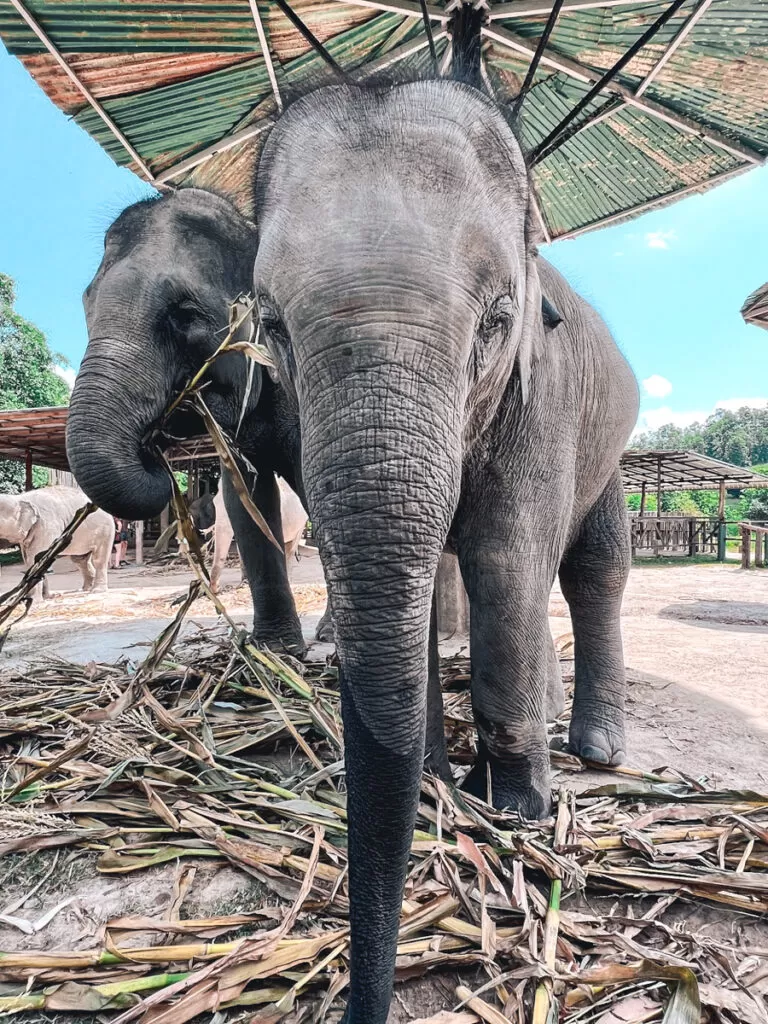
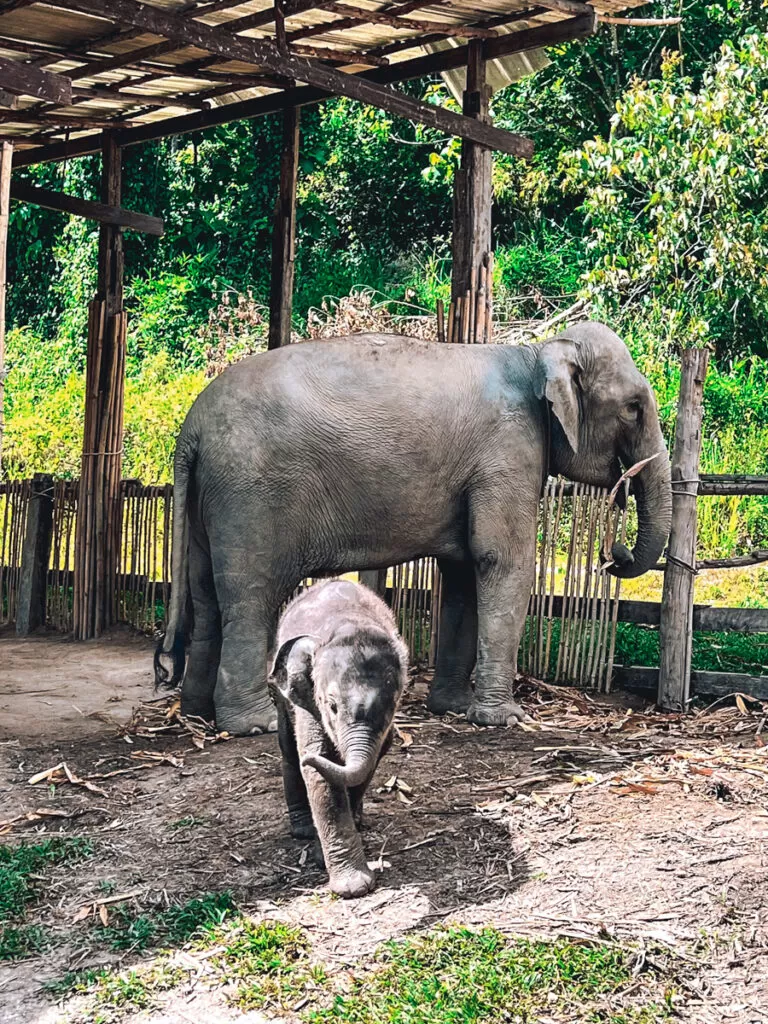
Elephant Jungle Sanctuary, Chiang Mai
I love that EJS promotes the elephants’ autonomy and respects their choice to participate – or not! – with visitors. The mahouts never use sticks, prods or threats, never restrict an elephant’s movements, and clearly enjoy a close bond with the gorgeous beasts.
There are several visitor programs at EJS. I chose the full day tour, but half-day and overnight programs are also available, each promising an immersive and educational insight into the world of these magnificent beings.
My visit to the Elephant Jungle Sanctuary was a truly moving experience – an opportunity to witness compassionate rehabilitation efforts of rescued elephants. Seeing the love, care, and respect for nature’s gentle giants was a fabulous experience that has left me with a lifetime of memories.
By Belinda from The Global Curious
The Elephant Sanctuary Camp 8 is one of the most ethical charities throughout Thailand and should absolutely be at the top of your list when visiting Chiang Mai.
Founded in 2014, this particular sanctuary prides itself on being an ethical and sustainable eco-tourism project and aims to create a change in perception of elephants where they’re not poached, overworked or abused.
From our experience, we found that they were very ethical in the care of the elephants. It was firstly very noticeable that the elephants had tons of space to freely roam around in.
We were then asked to make up some food from scrap, providing loads of nutritious vitamins and minerals to keep the elephants healthy. Once we’d finished we turned our attention to hand feeding the elephants. Whilst the leathery texture of the elephants trunks and their slobber took some getting used to, it seemed like they were having a great time and couldn’t get enough.
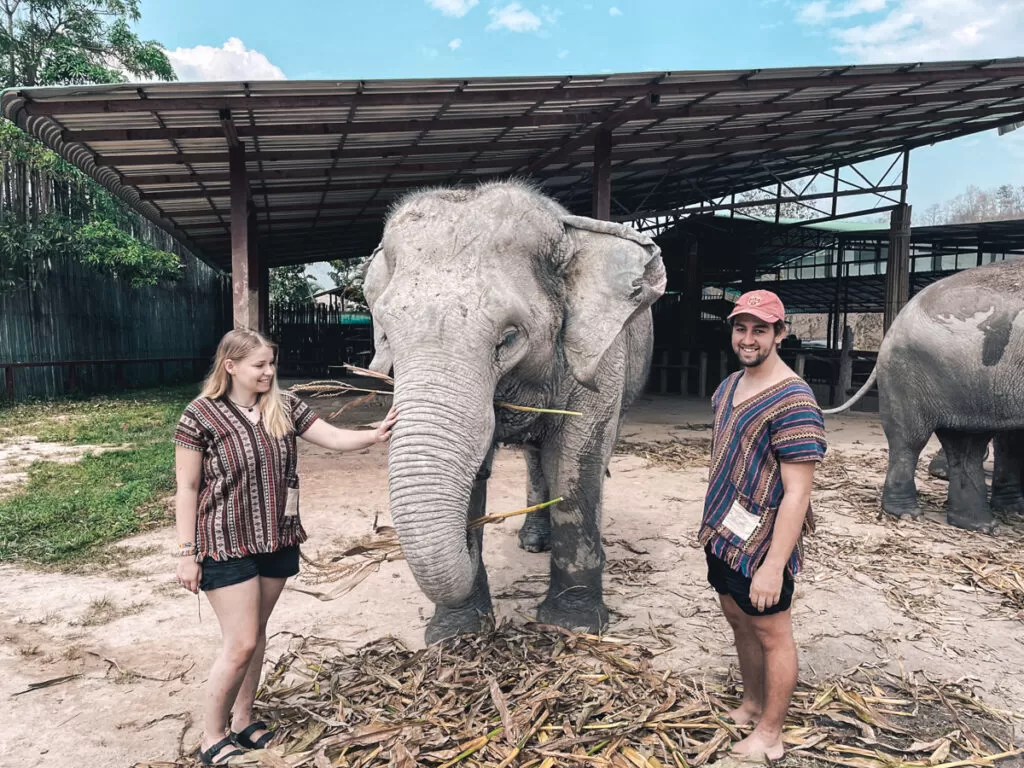
Elephant Sanctuaries Chiang Mai: Elephant Jungle Sanctuary
Once their food had been digested, our next task was to wash them. There was a large mud-based pool that the elephants willingly got into and people proceeded to shower them with water. We held back as we know it’s not the most natural activity for the elephants. The elephants were able to leave on their own accord.
The center offers a half day, full day, and an overnight stay as part of their packages. We chose the half-day package and thought it provided plenty of exposure to the good work they do in helping the elephants.
By Lea from Alex and Lea on Tour
Lucky Life Sanctuary is an elephant sanctuary north of Chiang Mai. Not much is known about the sanctuary and how it operates as they do not have a website, only a Facebook page.
I recently visited the Lucky Life Elephant Sanctuary about 45 minutes drive north of Chiang Mai city – one of about 100 elephant sanctuaries/ camps in Chiang Mai province.
It’s a stunning area and a magnificent sight to see so many elephants roaming freely! Of the 52 elephants there, 47 of them seemed to have a lovely life. They wander throughout their natural habitat and appear to be fully in their element.
However – and this is a big however – there are five elephants that are highly trained and, honestly, it was hard to watch. These five have to perform various tricks for visitors, like posing together with raised trunks, “waving” goodbye, and lying down so guests can sit with them. It seemed like a repetitive and unnatural routine for them.
Additionally, I observed some mahouts handling the elephants roughly. All carried a stick or sharp metal prod, which made me very uncomfortable, and often pinched the elephants’ ears to force them to comply. I saw one mahout punch an elephant’s trunk.
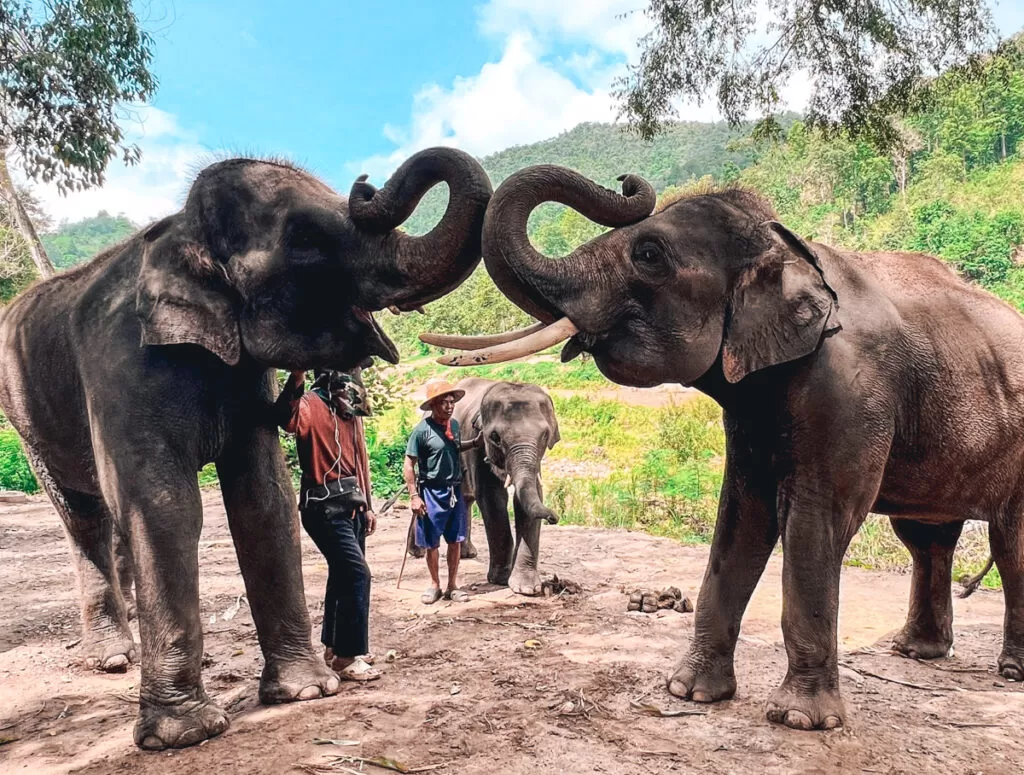
Lucky Life Sanctuary
A worker at Lucky Life told me that before the COVID-19 pandemic, the sanctuary offered elephant rides and forced the elephants to perform “art” shows (like painting and dancing) for tourists.
On a positive note, Lucky Life is now trying to move away from elephant performances and only mahouts ride the elephants these days.
Tourists still have the opportunity to feed the elephants and wash them in the river. Mostly the elephants seemed to enjoy having a splash, but the mahouts forced the elephants to remain in the water longer than they wanted to by pinching and pulling the elephants’ ears.
The sanctuary only offers half-day programs. That was enough for me.
I regret not doing adequate research before I visited Lucky Life Elephant Sanctuary. While I enjoyed seeing the gentle giants up close, my visit was tainted by witnessing what I felt were some unethical practices, and I would not choose to return.
By Belinda from The Global Curious
Hug Sanctuary is a family-owned Elephant Sanctuary 45-minutes outside the center of Chiang Mai. It was founded in September 2015 by Sawat Pansiri, Nattarika Toonkeaw and Nisachon Jaipang.
Experiencing an elephant sanctuary in Chiang Mai is one of the bucket list items in Thailand, and Hug Elephant Sanctuary is one of the most popular ones for tourists. Like most elephant sanctuaries in Chiang Mai, Hug Elephant Sanctuary does not allow tourists to ride the elephants and Bullhooks are not used at all.
From our experience, it appears that the elephants are free to roam inside the property grounds, but they were incentivized to go to specific areas during our visit thanks to food.
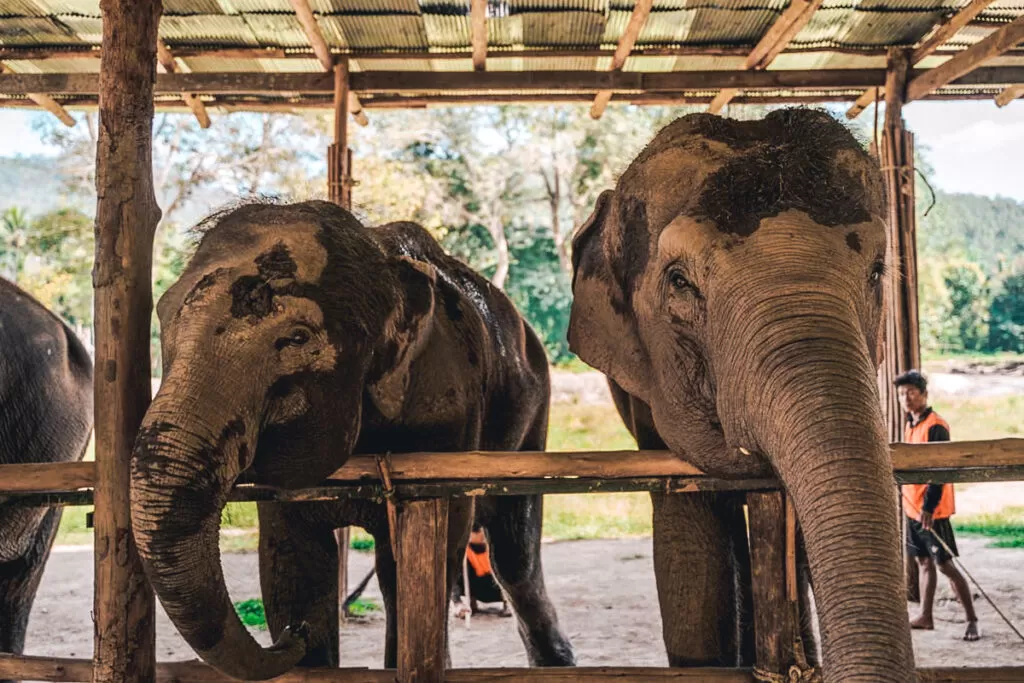
Hug Elephant Sanctuary
You are allowed to feed the elephants on your visit, but you must do so over a wooden fence. The elephants reach out with their trunks to grab the bananas you are feeding them. A visit to the sanctuary comes with a wash with the elephants in the river, as well as a mud bath. This elephant sanctuary only does half-day visits, and guests can do either morning or afternoon.
As with all elephant jungle sanctuaries in Chiang Mai, finding an ethical one is not the easiest. Though it doesn’t allow riding, Hug Elephant Sanctuary might not be the most ethical one as they wash and bathe the elephants twice a day.
By Sean of Travel Thailand Together
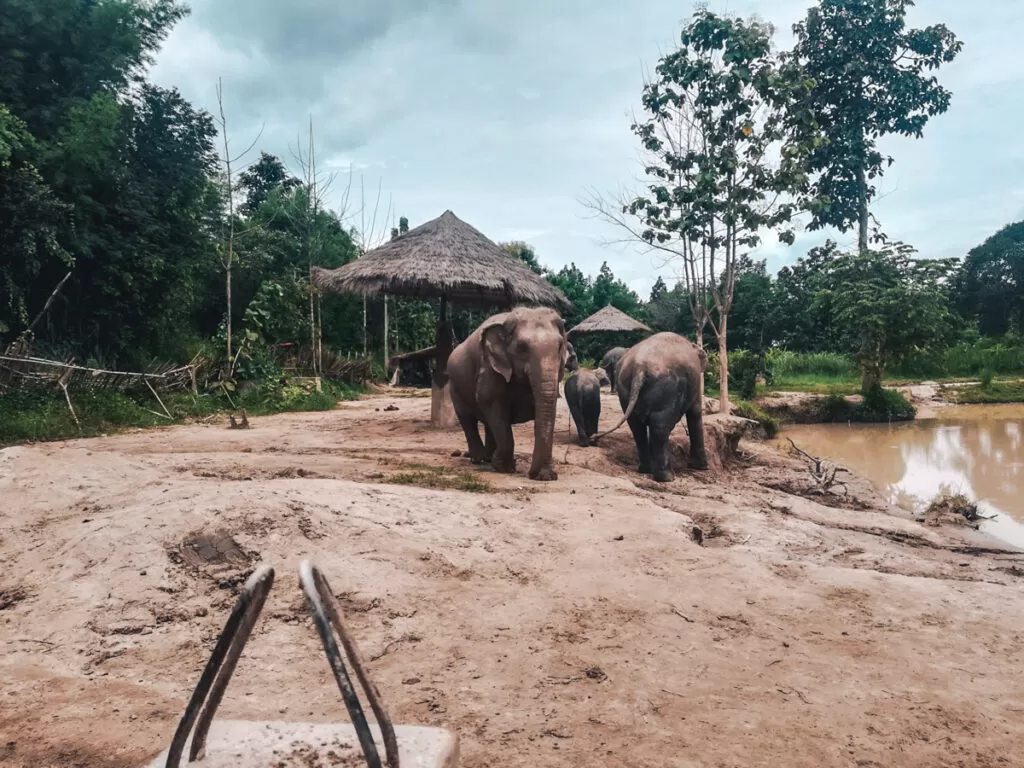
Maerim Elephant Sanctuary, Chiang Mai, Thailand (© Backpack Moments)
The Maerim Elephant Sanctuary was established by Busabong “Pui” Kuetkong and saved six elephants from cruel practices like logging, elephant riding, hooking, and chaining.
Maerim Elephant Sanctuary prioritizes the welfare of the elephants and creates an experience where they are the centerpoint, while visitors are secondary.
When I visited Maerim, we learned all about elephant behavior, gathered food, and fed them throughout the day (elephants do eat a lot!). Towards the end of the tour, we had a mud bath together with the elephants and relaxed in the regular swimming pool afterwards. It was quite a memorable experience and I totally recommend it!
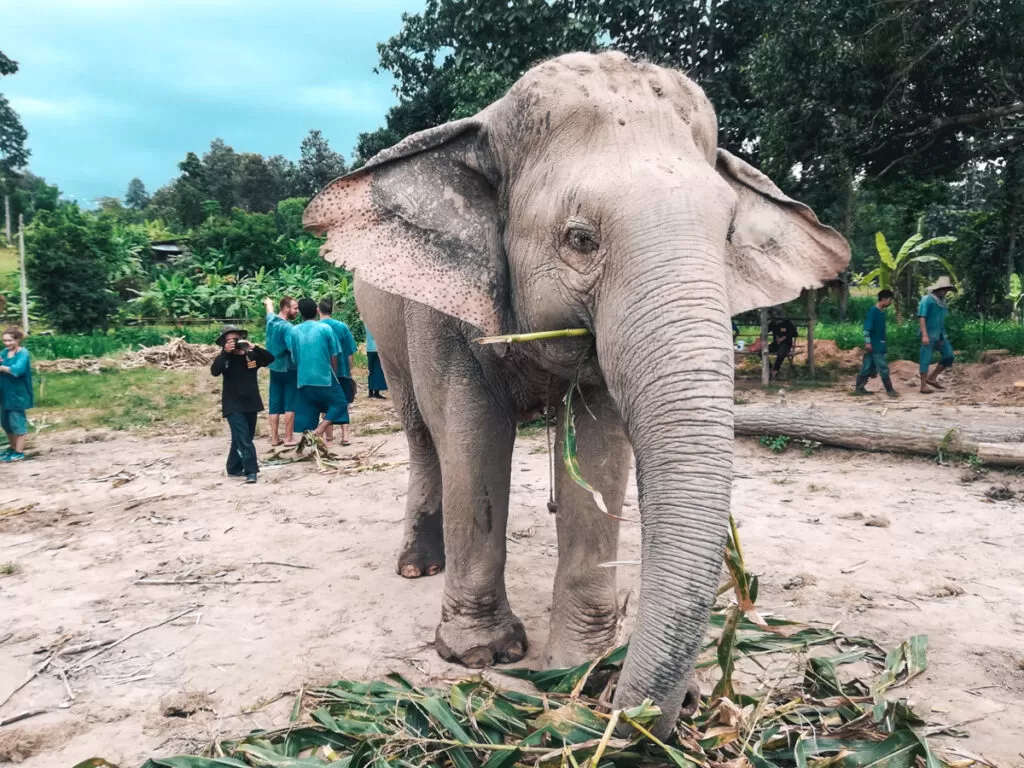
Maerim Elephant Sanctuary, Chiang Mai, Thailand
At Maerim, the elephants roam freely, there are no cages and the fences are just three thin pieces of wood. We could touch the elephants on the trunks, legs, and ears after giving them the mandatory bunch of bananas.
Nobody rides the elephants in Maerim, not even the mahout. The concept of this Elephant Sanctuary is that admission fees go towards buying more elephants from the people who exploit them. That’s why they are as free as possible in the sanctuary. There are no bullhooks, no ropes, and no harnesses.
This is why the elephants at Maerim were so happy! They were playful, cuddly, and friendly towards us. Maerim Elephant Sanctuary offers a half-day tour and different opportunities to volunteer.
By Simon from Backpack Moments
I took my first trip to Chiang Mai in 2019 and, like all 23 year old girls, playing with elephants was at the top of my bucket list. My friends and I knew that unethical tourism was a huge problem in Thailand, especially when it came to elephants, so we made sure to do our research and book an excursion with an ethical sanctuary. In the end, we settled on Maerim Elephant Sanctuary.
We decided to book their full day visit for 2,000 Baht or roughly $65/person. The visit included round-trip transportation directly from our hotel, a delicious Thai lunch, bananas to feed the elephants and an opportunity to bathe them in a mud bath at the end. They also offer half day visits in both the morning and afternoon and a more affordable “greet & feed” tour.
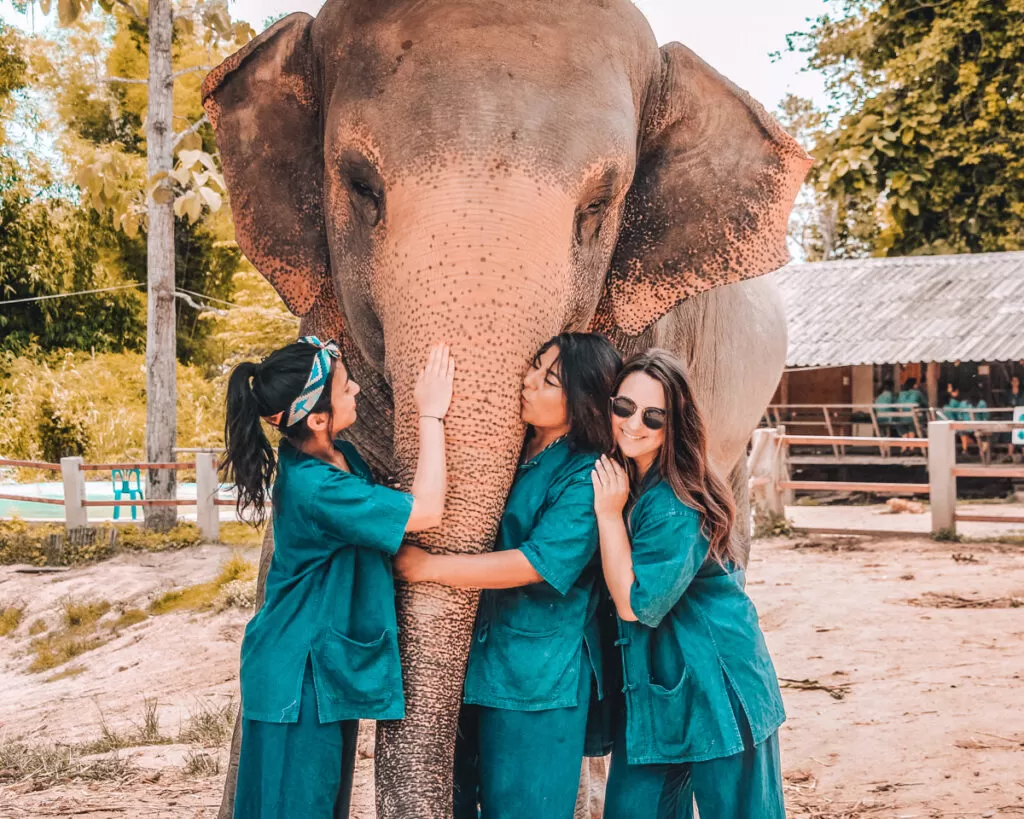
Maerim Elephant Sanctuary, Chiang Mai, Thailand
When we arrived, we were pleased to see that the description online was seemingly accurate. Absolutely no one was allowed to ride the elephants and they were free to roam around the sanctuary as they pleased. There wasn’t a bullhook in sight and, during the welcome orientation, the volunteer explained that the elephants at Maerim were free to do as they pleased and would not be forced to interact with visitors.
However, having read more on the topic since that 2019 trip, I am still not 100% convinced that booking a visit to an elephant sanctuary was the right call. Many sanctuaries are aware that tourists are looking for an “ethical” experience and take measures to make it appear that way on the outside. It’s impossible to really know what’s going on behind the scenes. Although I selfishly enjoyed my visit to Maerim Sanctuary, I won’t be participating in elephant tourism again in the future for fear of the unknown.
By Madison from Madison’s Footsteps
I highly recommend the full-day experience at Maerim Elephant Sanctuary. During my visit, I had the opportunity to meet the elephants, feed them multiple times, cut down sugarcane trees, and give them a mud bath. After the mud bath, we washed them down, and some even took a nap as we rubbed them.
We did not notice any concerning signs about this sanctuary. We did not engage in elephant riding, witness any bullhook usage, or observe mistreatment towards them. The elephants appeared content and at ease, looked well-fed, and they had plenty of free space to wander around.
During our visit to the sanctuary, we had the opportunity to meet five rescued elephants and learn about their individual stories, including the abuse they endured from their previous owners. Because of this, we were advised not to bring selfie sticks outside as the elephants may mistake them for whips. The workers were highly informed and enthusiastic about the elephants, sharing interesting facts with us. The elephants appeared content and relished our company, munching on fruits and foliage.
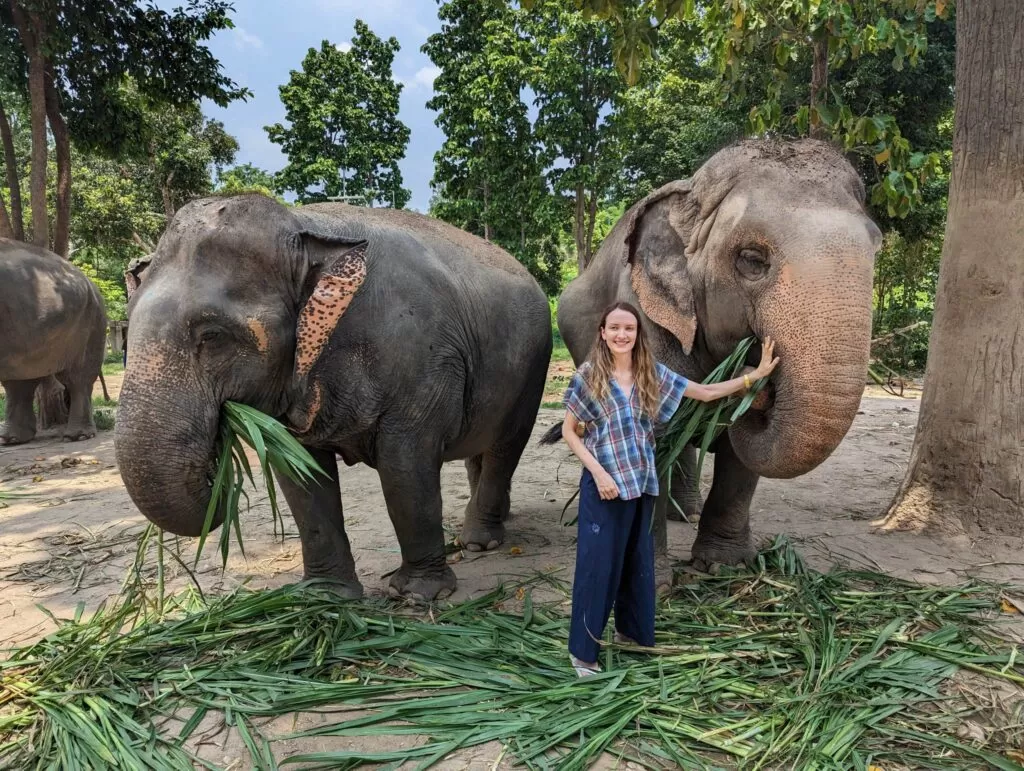
Maerim Elephant Sanctuary, Chiang Mai, Thailand
I suggest opting for the full-day experience as it allows for better bonding with the elephants and the people on the tour. As a shy solo traveler, I found everyone very friendly and approachable, and even managed to make some friends there that I stayed in touch with for the rest of their stay.
We also got to relax in the pool, and there were plenty of opportunities to take photos of the special experience. The photographer took stunning snaps throughout the day while we interacted naturally with the elephants. Therefore, I highly recommend that you go for a full-day trip to make the most of the adventure.
By Caitriona from TPR Teaching
Kindred Spirit Elephant Sanctuary is an award-winning non-profit foundation that was established in 2016. Their aim is to return elephants to the forest again while at the same time providing livelihoods for the mahouts and their families.
We had the opportunity to visit an elephant sanctuary in a remote village, about a five-hour drive from Chiang Mai, Thailand. It’s probably one of the only places where you’ll encounter Asian elephants actually living in their natural environment.
Co-founded by a passionate zoology graduate from Ireland and a Thai mahout (elephant caretaker), Kindred Spirit’s elephants roam in the forest near a Karen hill tribe village that has a long history of caring for them. The sanctuary takes a deeply holistic approach to animal welfare and protection.
The non-profit welcomes overnight guests for a cross-cultural experience in rustic village homes, with daily opportunities for hiking out to feed and observe the elephants.
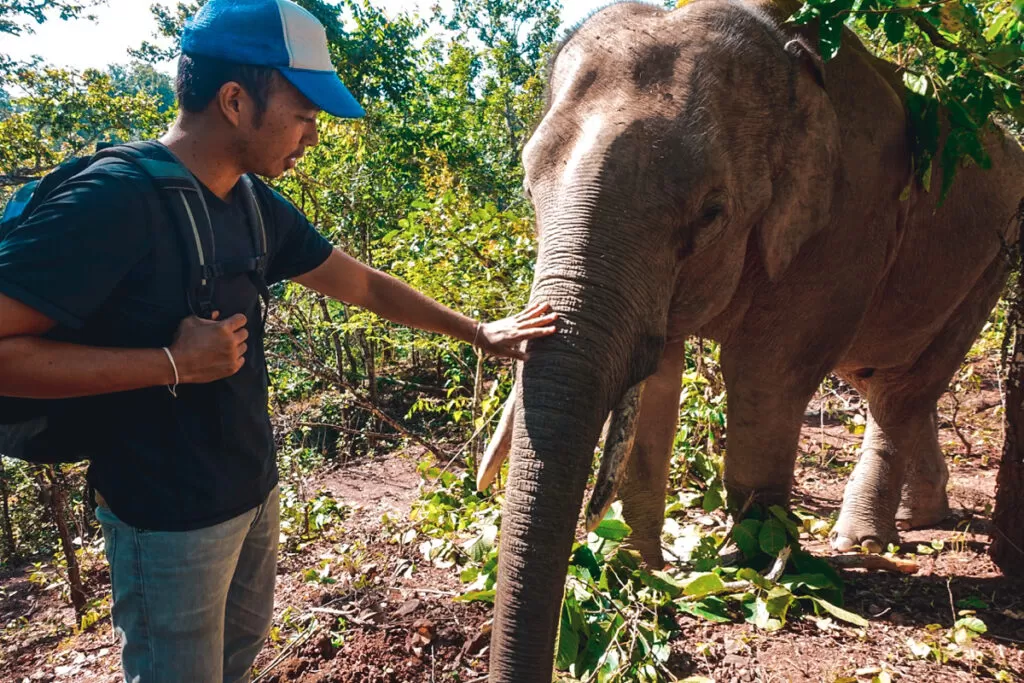
Ethical elephant Sanctuaries in Chiang Mai: Kindred Spirits Sanctuary
Because it’s so rare to observe Asian elephants in their natural environment, Kindred Spirit Elephant Sanctuary has a strong focus on research to promote elephant well-being and animal rights education.
Long-term volunteers can stay for weeks or months to help collect data on the animals as well as volunteer with the village school and other community projects. There is a volunteer fee to cover room and board which also supports the operations of the non-profit.
By Michelle from Intentional Travelers
Patara Elephant Farm is a reproduction-management farm for Asian elephants. Its main focus is on educating the public about elephants and the threats they face. It was founded in 2001 by Theerapat “Pat” Trungprakan and Anocha Dao with the goal of preserving the elephant population in Thailand.
There are lots of interesting things to do in Chiang Mai, but my visit to Patara Elephant Farm has been the highlight of my time there.
Patara is an elephant sanctuary that is a home for rescued elephants, where they roam free. I was there with my partner, and we got assigned a beautiful elephant for the day. Our experience included learning about elephant health and performing an easy “health check” on her, feeding her, riding her through the jungle, bathing her in the river, and returning. It was amazing.
They offer different programs. “‘Elephant Caregiver for a Day’ was the one we did. They also have ‘Elephant Day Care’, where the focus is on taking care of pregnant and young elephants. You learn about them, their health, walk with them and bathe them, but you don’t ride them. There’s a third program, ‘Baby Elephant for a Day’, which is similar to the latter.
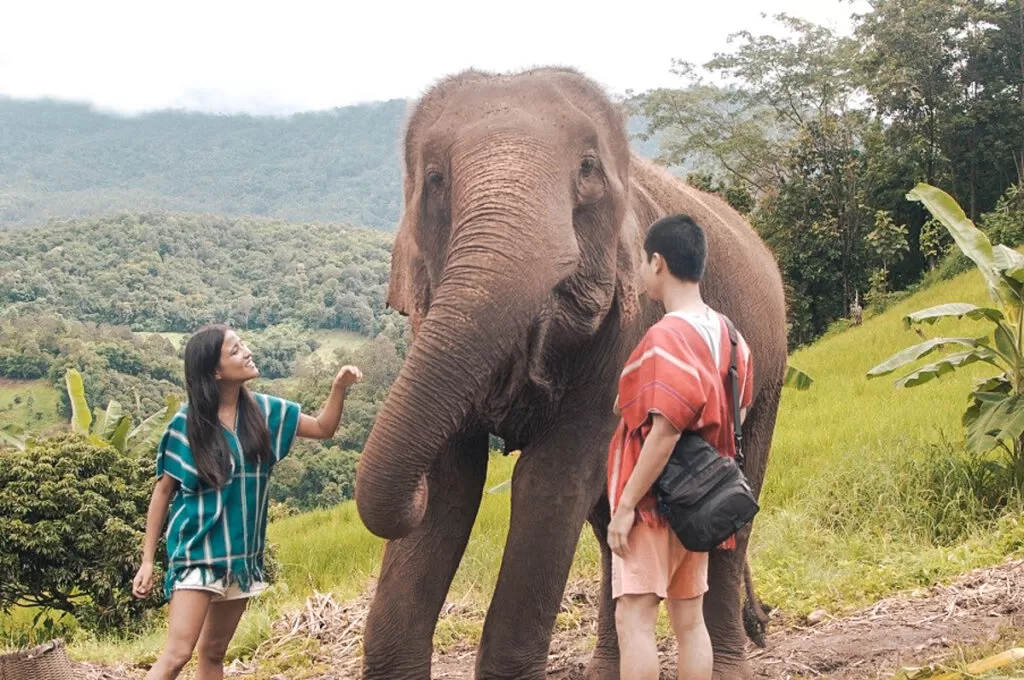
Patara Elephant Farm
There are several points of view about what makes an elephant sanctuary ethical. In my opinion, at Patara, they take great care of the elephants. Some people consider that riding the elephants is not ethical, and while I totally understand this point of view, I also understand that the income that comes from providing these kinds of experiences for visitors allows the sanctuaries to provide the food and healthcare they need.
And even if you are riding them, you ride them bareback (on their neck, actually), so they don’t have any chairs or ropes around them. No bullhooks are used, of course. The experience feels totally ethical, and you get to connect with your assigned elephant for the day in a unique way.
By Sharon from The Roads
Elephant Retirement Park is a home for retired working elephants, at Baan Eieag village in Northern Thailand. It was established in 2018 by Adulwit Khamya.
Interacting with elephants was on my bucket list for Thailand. However, how elephants get broken into riding is inhumane and cruel. As I did not want to support such unethical business practices, I looked for an ethical elephant sanctuary in Chiang Mai that does not allow elephant riding.
I booked a one-day volunteer program at Elephant Retirement Park (ERP), where retired and rescued elephants spent the rest of their lives in nature.
ERP sent a van to pick up volunteers from Chiang Mai hotels because the sanctuary was located in the forest, away from the city center.
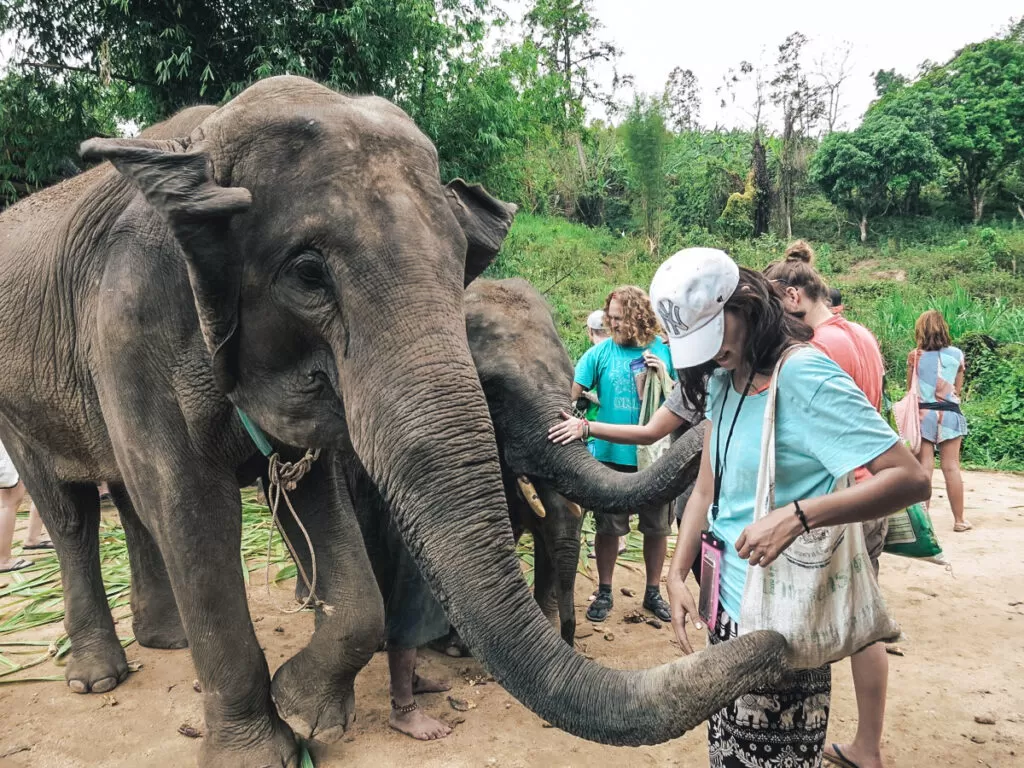
Elephant Retirement Park
Once we arrived, we learned about elephants and met their longtime volunteers. Then, we prepared meals – bananas and sugar cane – to feed the elephants. The park offered a vegetarian buffet, so we fed ourselves before playtime.
Elephants love to bathe in mud, which protects their skin from the sun. The volunteers jumped in to help the elephants bathe and wash them off with water later. ERP provided a set of clothes for the mud bath and shower facility, so no worries about going home dirty.
Although I was volunteering, it was a lot of fun, and I felt like playing with the elephant the entire day. I highly recommend ERP to anyone looking for an ethical opportunity to learn about elephants and interact with them.
By Chloe from Chloe’s Travelogue
Chai Lai Orchid Elephant Camp is an eco-lodge and elephant camp located in Chiang Mai. It is known for its commitment to responsible tourism, sustainable practices, and empowering marginalized women from local ethnic minority groups.
Our stay at Chai Lai Orchid was one of the biggest highlights of our sabbatical in Southeast Asia. We chose it on the recommendation of a friend who’d been to Thailand the year before, and we weren’t disappointed.
We were impressed by its ethical credentials – not only for the elephants, who they look after as if they were their children – but 100% of the proceeds also go to Daughters Rising, a Thai charity that supports vulnerable women.
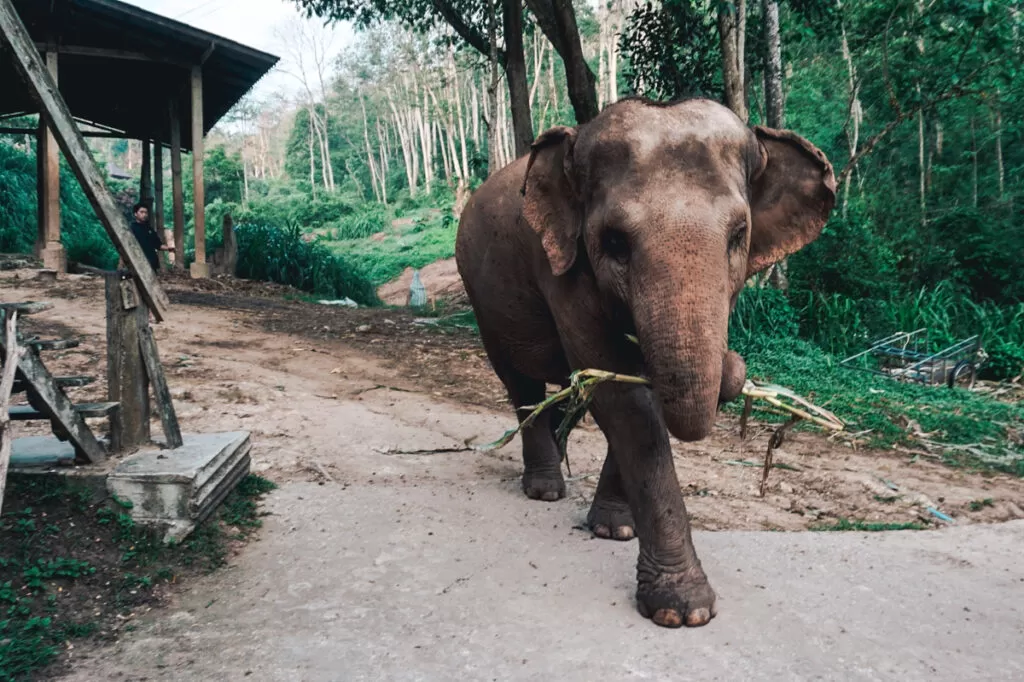
Chai Lai Orchid Elephant Camp
There are many ways to visit Chai Lai Orchid, from half-day experiences to just using it as a kind of elephant Airbnb, but we opted for the two-day homestay, which included time washing and looking after the elephants, a trip on the river in rafts and a trek to a local waterfall through the jungle.
It was one of the most memorable things we’ve ever done. Getting up close to these magnificent animals and playing a small role in their daily routine was a joy, but waking up in a wooden chalet to an elephant munching on a tree in the morning light, that’s what will stick with me forever.
I would highly recommend some time at Chai Lai Orchid, the location, experience, food, and ethics were perfect.
By Ben from The Sabbatical Guide
Doi Lom is an elephant sanctuary in Chiang Mai. Little is known about the sanctuary and they only have a Facebook Page.
I recently had an incredible experience at Doi Lom Elephant Sanctuary in Chiang Mai. This is one of the newer elephant sanctuaries in Chiang Mai, and was only recently established in early 2022. They currently offer both half-day and full-day tours.
One thing that impressed me was that they have a strict no-riding policy. No one, aside from the mahout (elephant caretaker), was riding the elephants. The staff made it crystal clear that riding elephants is a big no-no because it causes them harm. They even explained that any sanctuary allowing this is definitely not ethical. So, no saddles or tourists on the elephants’ backs. These majestic creatures were left to wander freely in their natural habitat, which was beautiful to see.
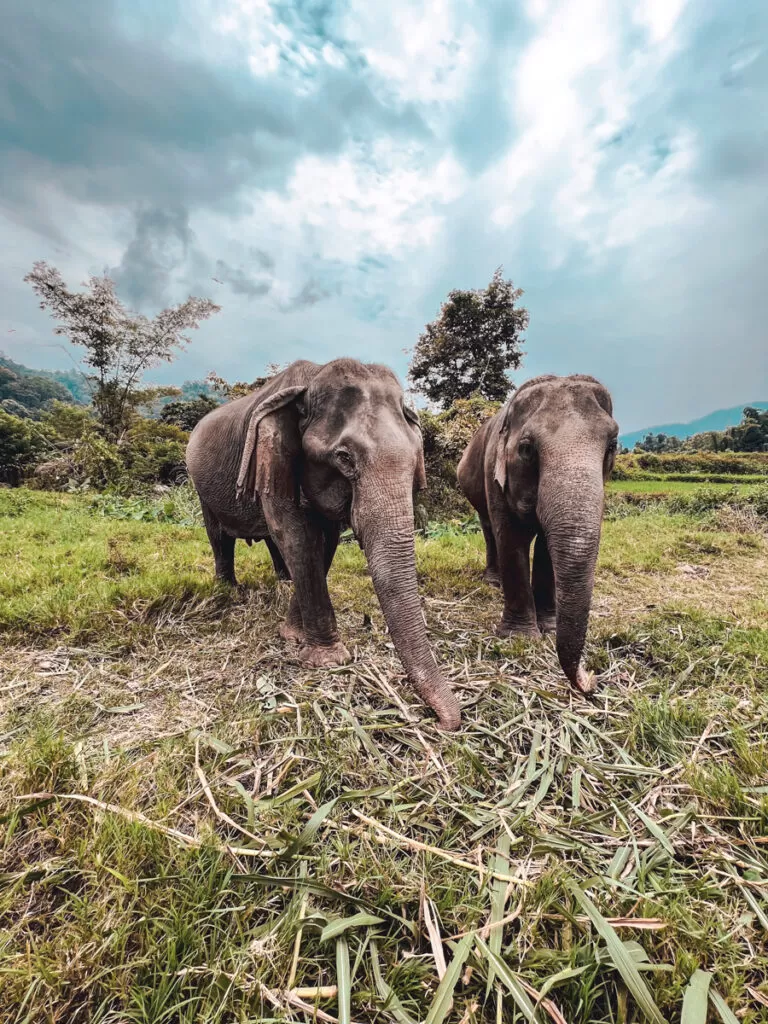
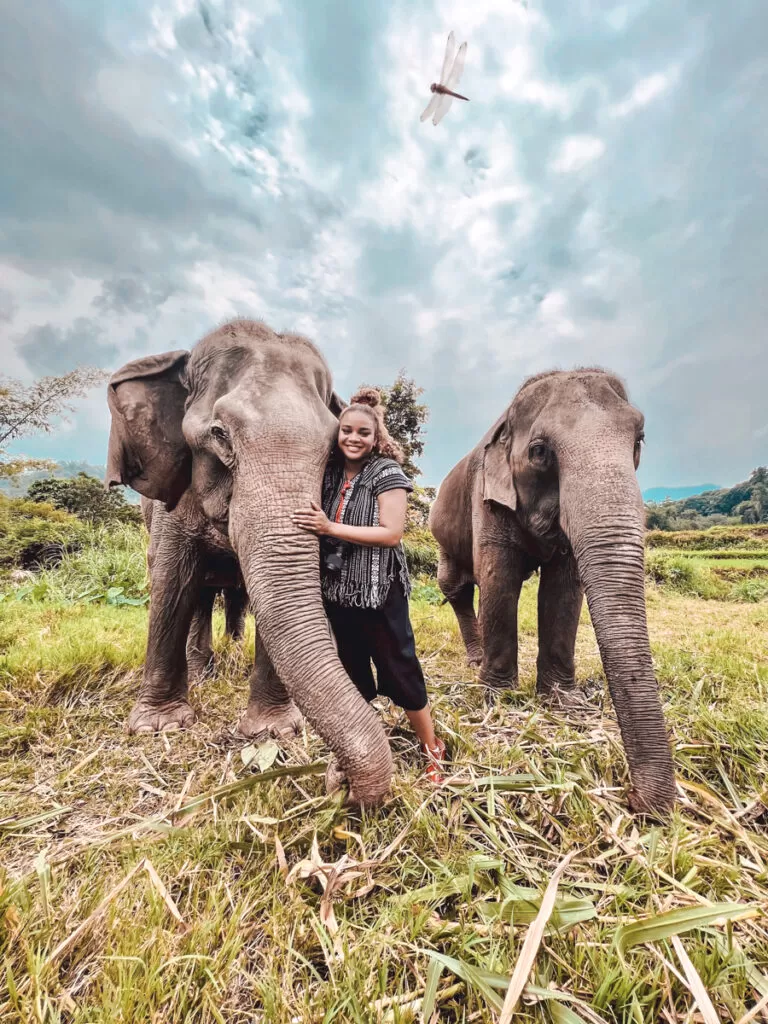
Doi Lom Elephant Sanctuary
To start the half-day tour, we made these special “elephant balls” using bananas and other nutrients, all wrapped up in banana husks. Then we got to hand feed the elephants the food we made them. Next, we got to wash the elephants. We armed ourselves with buckets and brushes, and got to splash around in the water with these gentle giants. It was a bonding experience like no other.
We even had a few water fights with the elephants. And I can tell you, they are quite mischievous! Before you plan your visit, remember to do your own research and make sure the sanctuary you choose aligns with your ethical standards. But based on my personal experience, this particular sanctuary was the real deal. The staff’s dedication to the elephants’ well-being was evident in every aspect of the visit.
By Tiana from Where Tiana Travels
Maekland Elephant Sanctuary is or was an elephant sanctuary in Chiang Mai. Today, there is no indication that the sanctuary still exists. The Instagram page hasn’t been updated since 2019 and their website is down.
It’s difficult to know the truth about elephant sanctuaries; is this another tourist attraction that entraps these beautiful creatures, or is it truly ethical? The first time I went to Thailand I booked onto a tour and one of the activities of the day included an elephant ride; I didn’t realize it was included in the tour and I hated every second of it. I remember even telling the mahout off for having a bull hook.
The second time I went to Thailand, I decided to visit a sanctuary; to be in the presence of these creatures is certainly alluring, but how can we do it ethically?
Well, Maeklong Sanctuary certainly seemed 100 times better than the elephant rides or shows you see advertised all over the country. We learned that Maeklong elephants have been rescued off the streets; they were used for tourist rides and poorly treated.
Money generated from the sanctuaries helps Maeklong buy more elephants that are still stuck in the cruel tour trade, freeing them from this life and the remaining money feeds elephants (they need so much food!).
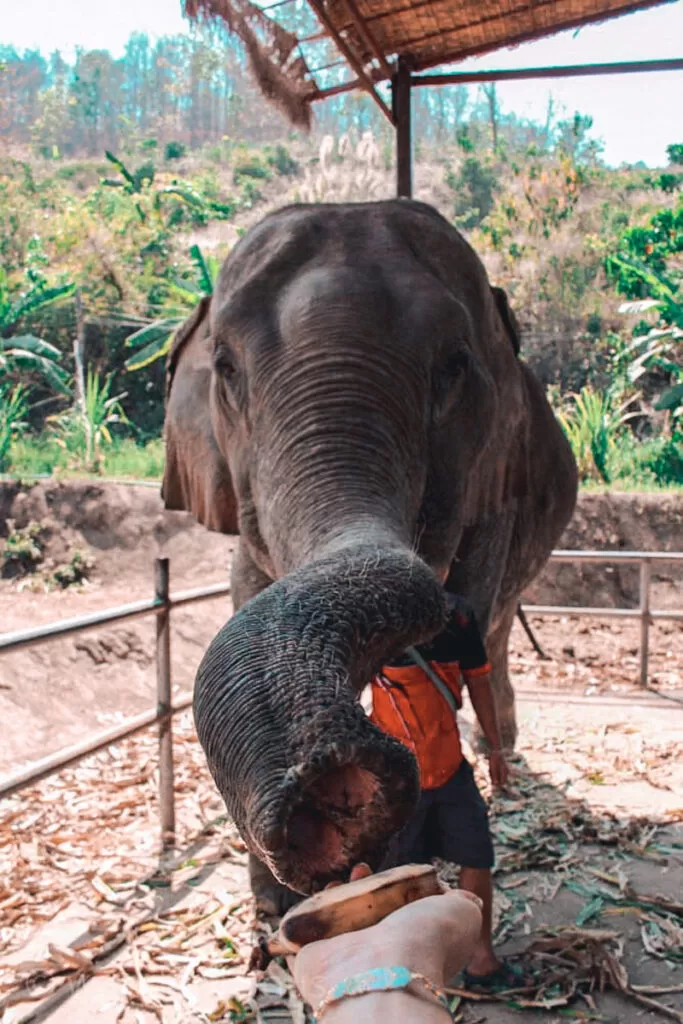
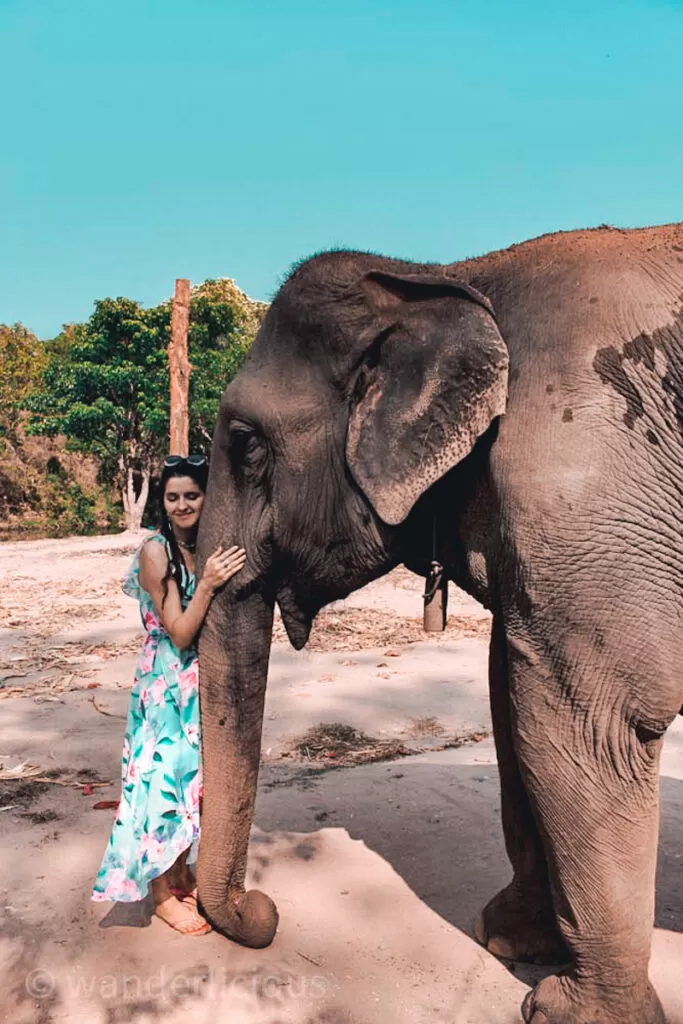
Maeklang Elephant Sanctuary in Chiang Mai
We went for a full-day tour, we fed the elephants, took photos with them, and then prepared some special, highly nutritious meals for them to eat using coconut and certain nuts and seeds.
Lastly, we bathed the elephants in the water – we were taught that this keeps them cool and the mud gives them sun protection. I understood that bathing the elephants helped them stay healthy. I was very content, but this warm glow evaporated quickly when people pointed out that you’re not meant to bathe with elephants. In fact, it’s pretty unethical.
Bathing in water is something the animals should be able to do without an enforced time limit. I’ve heard that some sanctuaries prioritize profits over their elephants and don’t allow their animals the freedom to move. We didn’t bathe the elephants for long, but I felt like this was not made clear to me.
Sanctuaries are clearly the better option than elephant rides or shows, and if all sanctuaries disappeared, where would the elephants go? Where would they get their food? They can’t be re-released into the wild.
Is there even such a thing as an ethical elephant sanctuary? I think so, but you need to research a sanctuary very carefully before you go.
By Adriana from Wanderlicious
There are two other sanctuaries in Chiang Mai that I wanted to add to this list after performing my own research. From what I’ve found they are both highly ethical operations. They are called BEES Elephant Sanctuary and Changchill.
BEES (Burm and Emily’s Elephant Sanctuary) is a unique elephant sanctuary and rescue center located in Chiang Mai. It is known for its focus on providing a natural and healing environment for elephants that have been previously exploited or injured.
BEES puts the elephants first. They emphasize providing a natural and stress-free environment for elephants. The sanctuary is set in a lush and forested area where elephants have ample space to roam, forage, and engage in natural behaviors. As a traveler, you can observe the elephants in their natural habitat without interfering with their daily routines.
They have very consciously adopted a “No contact – Hands-off” approach for visitors to the center. This is because they realized that petting and washing the elephants caters to the tourists’ needs but is not necessary for the elephants.
At BEES, the roles have been reversed and the humans now work for the elephants instead of the opposite way around. At BEES, you can still interact with elephants by going on walks and hikes through their habitat to observe them. Aside from that, you will be asked to prepare their food (but not feed them) and clean their environment.
In my opinion, this seems one of the best sanctuaries to visit in Chiang Mai!
Changchill, formerly known as Happy Elephant is another ethical elephant sanctuary in Chiang Mai that has been credited by World Animal Protection.
It previously allowed visitors to feed and bathe the elephants but they have stepped away from these practices under the guidance of World Animal Protection. These days, visitors to the sanctuary can go on a guided walk through the woods in which the elephants roam freely and observe them bathing from an observation deck.
Sustainability is at the heart of the organization. Aside from the activities involving the elephants they also focus on educating travelers on various subjects like traditional medicine, Thai culture, and the community history of the Karen tribes.
All the meals at Changchill, which means “relaxed elephant”, are plant-based.
→ PRO TIP: Traveling soon? check out my ultimate packing list for Thailand!
As you can see, a lot of elephant sanctuaries in Chiang Mai claim to be ethical and partly they are, but some factors are still concerning like bathing the elephants and the use of bullhooks.
There are also a lot of half-day tours on offer. This means that the elephants need to do the same routine twice a day.
They get fed and washed by a bunch of strangers in the morning and then once again in the afternoon. This is far from ethical and cannot be forced on them. It’s actually the same as performing tricks but disguised as responsible tourism.
However, most of the elephants living in these sanctuaries are way better off than the ones that live in captivity at circuses, zoos, tourist facilities providing elephant rides, and illegal logging facilities where they need to do heavy work.
It’s not ideal yet, but hopefully, over time the mindset of the general public will shift even more toward what ethical tourism really entails. In the future, it would be good that sanctuaries are regulated by authorities, providing them with a set of rules on how to operate sustainably.
These rules shouldn’t only have the welfare of the elephants as their sole purpose but also the welfare and livelihoods of the mahouts, their families, and the local rural communities that have been living in co-existence with the elephants for thousands of years.
A community-driven ecotourism model is necessary to balance out all the factors that are involved in the issue of ethical elephant tourism. Loss of habitat is another important issue in this matter. At present, there is simply not enough forest left in Thailand for elephants to roam free.
To finish this post, let me provide you with a few frequently asked questions about ethical elephant tourism!
→ Also read: Chiang Mai Flower Festival: Is It Worth to Visit?
It’s hard to decide on an exact number as a lot of so-called “elephant sanctuaries” pop up out of nowhere. Presumably, there are about 50 to 100 venues to observe elephants, including zoos and unethical organizations.
Elephant Nature Park is considered one of the most popular elephant sanctuaries in Chiang Mai. It has gained significant recognition and positive reviews worldwide for its commitment to elephant welfare and ethical practices.
Yes, there are four elephant sanctuaries in Chiang Mai that have earned credentials for being ethical operations. These are BEES, Elephant Nature Park, Kindred Spirit and Chiangchill.
The best ethical elephant sanctuaries in Chiang Mai are BEES, Elephant Nature Park, Kindred Spirit, and Chiangchill.
Furthermore, you can trust these elephant sanctuaries in Thailand to operate ethically: Boon Lott’s Elephant Sanctuary, Following Giants, Phuket Elephant Sanctuary, and Somboon Legacy Foundation.
No, in general, it is not okay to bathe with elephants. The point of visiting a sanctuary is that the elephants are able to roam free and do as they please. They love to take mud baths and splash in the water on their own and it’s possible that you will witness this on a sanctuary visit.
However, when the elephant is forced into the water to cater to the tourists’ needs, this is where the ethical aspect stops and animal abuse begins.
Phajaan, also known as “crushing” or “breaking the spirit,” is a traditional and highly controversial method used to train young elephants for various purposes, including riding, logging, or performing in shows.
It involves subjecting young elephants, often between the ages of 2 and 4, to intense physical and psychological abuse in order to break their will and make them submissive to human commands. The process typically involves isolating the elephant, depriving them of sleep, food, and water, and subjecting them to physical beatings or other forms of punishment. Elephants may be tied up, confined in small spaces, or subjected to painful tools like bullhooks.
The aim of phajaan is to crush the elephant’s spirit and establish dominance over them, making them more compliant to human instructions. It is widely condemned by animal welfare organizations and conservationists as a cruel and inhumane practice that causes severe physical and psychological harm to elephants.
Most of the elephants you will meet at sanctuaries will have undergone this treatment.
Yes, this is possible but it mainly concerns elephants in the timber industry that have been living in the forest or orphaned babies that have been a victim of poaching or human-elephant conflicts.
Elephants that have been kept in cages have never learned to forage for food on their own and have never before engaged in natural survival techniques. It’s very hard to re-introduce these elephants into the wild again.
The use of bullhooks on elephants is generally considered to be unethical and inhumane by many animal welfare organizations and advocates. A bullhook is a tool with a long handle and a sharp metal hook at the end. It is traditionally for controlling and managing elephants through fear and pain.
Bullhooks are often used in practices that involve training elephants for entertainment purposes, such as circuses or riding camps. The hook is used to inflict pain on sensitive areas of the elephant’s body, like the ears, mouth, or feet, to control their behavior.
Ethical sanctuaries and organizations reject the use of bullhooks. Instead, they use positive reinforcement training methods that rely on rewards and trust to interact with elephants.

Asian elephant
There you go! We are at the end of this post about the best elephant sanctuaries in Chiang Mai and which ones operate in an ethical way.
Ethical elephant tourism is a subject that has already been debated a lot. Feel free to leave a comment below if you want to discuss this topic further or drop me a message through my contact page if you want to have a private conversation about this matter.
Also, don’t forget to check out my resources page with my favorite booking platforms and tips to start planning your trip. Additionally, have a look at my favorite travel gear if you want to pack more consciously!
ENJOY!
Disclaimer: This post may include affiliate links. If you click on them, I may receive a commission at no extra cost to you.
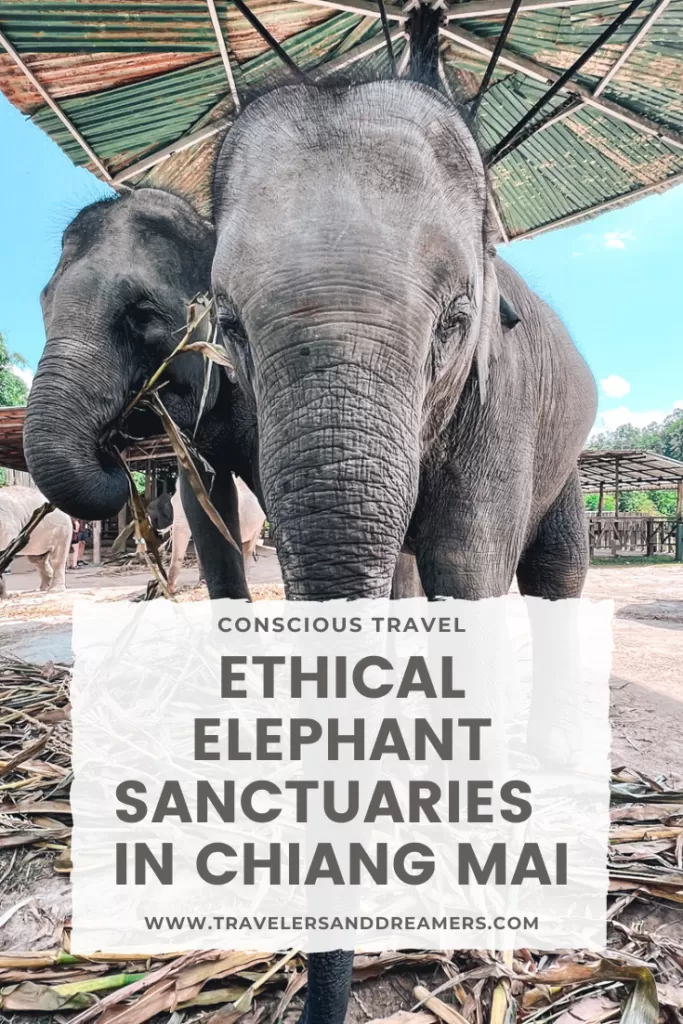
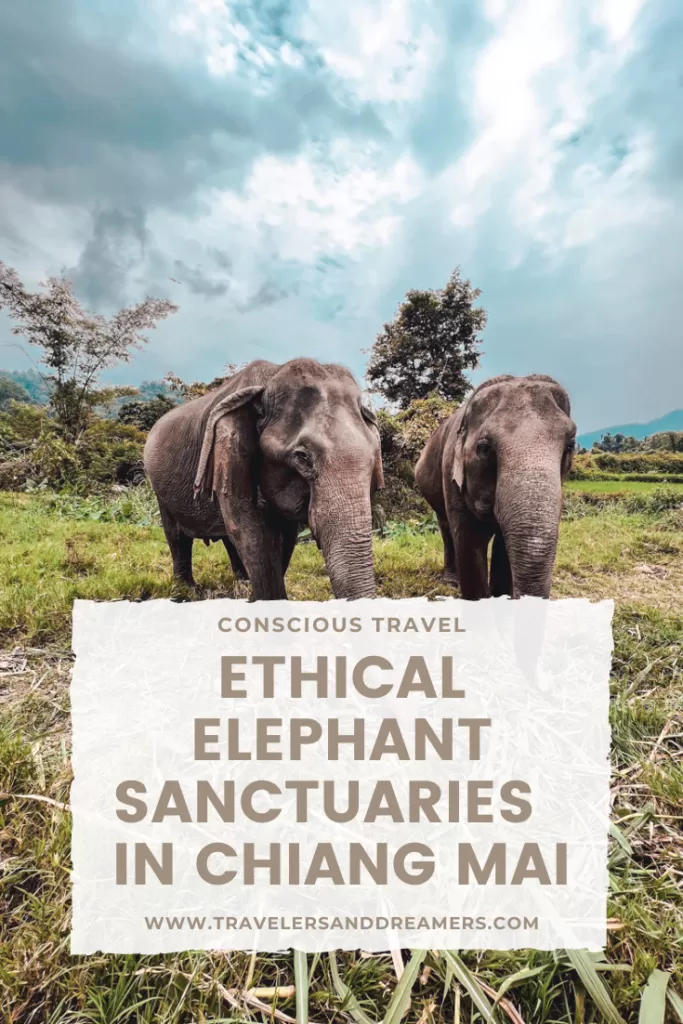

Hi! I am Annelies and this is Travelers & Dreamers, a blog about conscious travel which means traveling in a more mindful way, with a positive impact on the world and yourself!
On this website, I cover different topics like slow travel, plant-based food guides, responsible travel, sustainable packing, eco-travel, and more!
Latest Posts

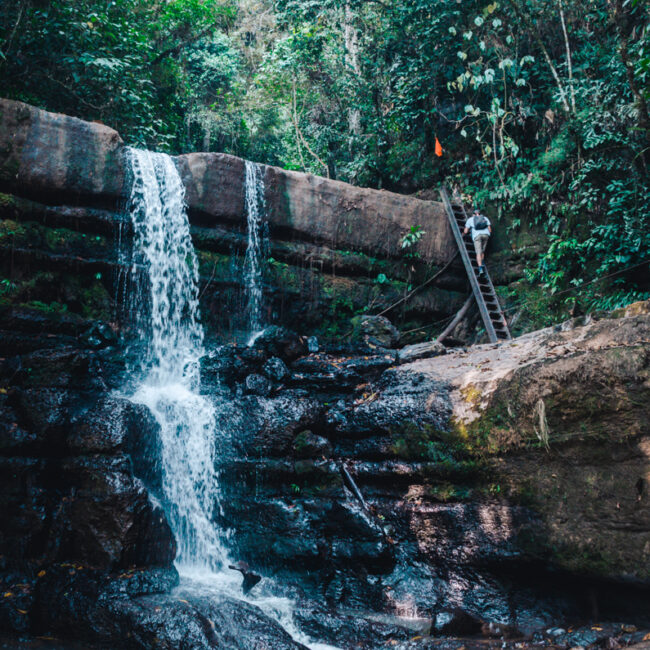
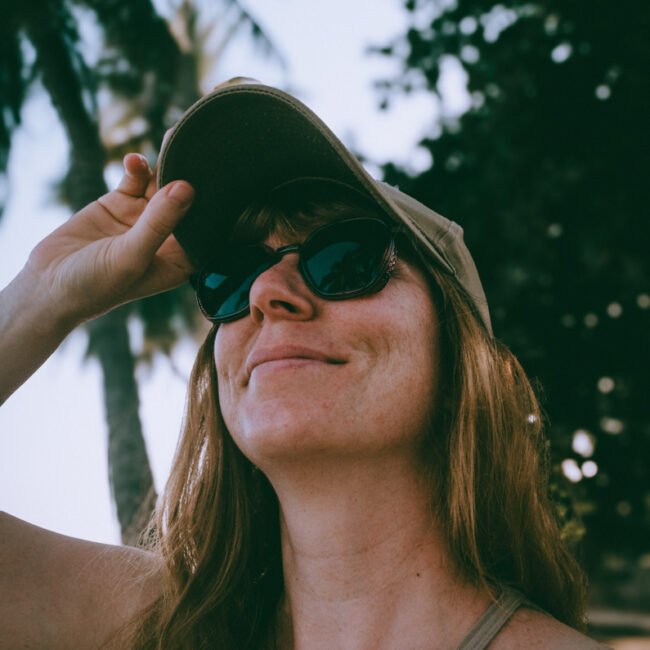
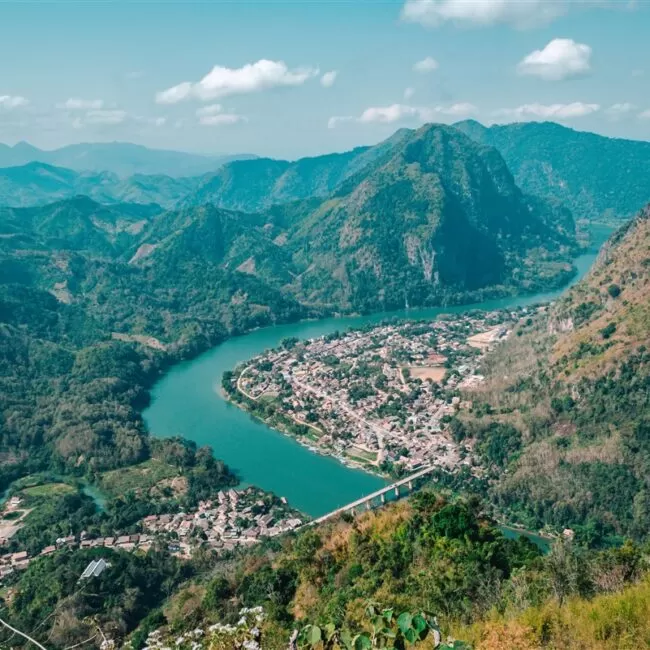
15 Best Things to Do in Nong Khiaw, Laos (2024)
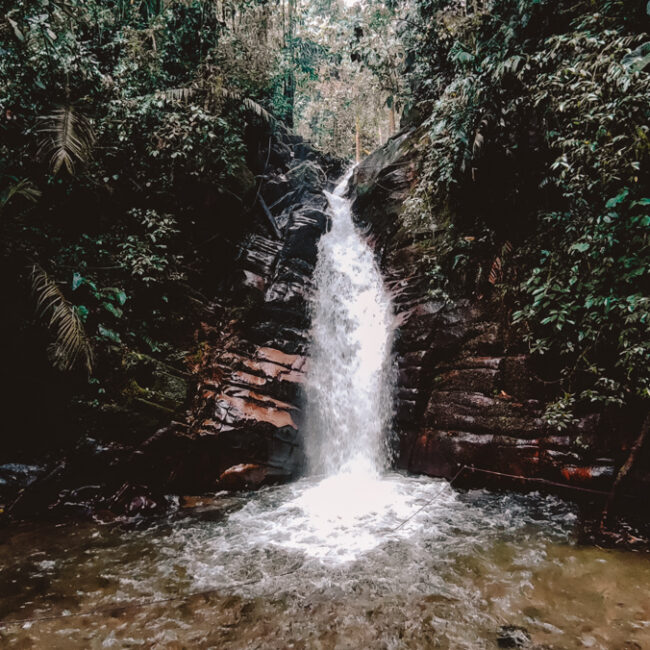
Santa Rita, Salento: All You Need to Know
Do you want to receive my latest finds on conscious and sustainable travel directly to your inbox? Subscribe here!
© COPYRIGHT TRAVELERS&DREAMERS, 2023.